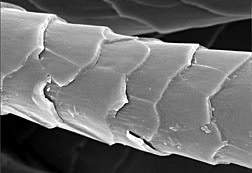Today I am sharing The Green Age's article on Sheeps Wool Insulation
http://www.thegreenage.co.uk/advantages-sheep-wool-insulation/
Understanding Wool and all its properties has become a mission that runs along side my work, as I use Wool as an Artistic medium.
Some of the information is useful to my work, some of it is useful to know for life in general - This post is exactly that.
This is a snippet from the article:
Sheep wool insulation is an outstanding insulator
For thousands of years sheep have been able to survive the elements using their wool coats to protect them from extreme cold and heat. Due to the crimped nature of wool fibres, they form millions of tiny air pockets that trap air, helping to provide a thermal barrier.
Thermal conductivity is the ability for heat to pass from one side of a material through to the other. It is measured in W/mK, where a lower value signifies a better insulator.
Sheep wool insulation has a thermal conductivity of between 0.035 – 0.04 W/mK, where as typical mineral wool has a thermal conductivity of 0.044 W/mK.
Sheep wool purifies the air
Sheep wool is proven to absorb and neutralise harmful substances – the wool is a natural protein made up of a number of different amino acid chains (18 to be exact!) of which 60% have a reactive side chain.
These reactive areas allow the wool to absorb harmful and odorous substances including Nitrogen Dioxide, Sulphur Dioxide and Formaldehydes and neutralise them through a process known as Chemisorption.
So using the sheep wool as insulation actually has health benefits and creates a feel-good indoor climate.
Sheep wool regulates humidity
Sheep wool can absorb 33% of its weight in moisture without compromising its insulating ability. The core of the sheep wool fibre is hygroscopic, meaning that it will absorb water vapour – making it perfect in the loft space where you tend to encounter more condensation.
Sheep wool offers outstanding sound insulation
Sheep wool offers fantastic acoustic insulation – far better than comparable insulating wool materials. Therefore it is becoming increasingly popular in schools and offices to help aid concentration in the classroom and ensure meetings can be held undisturbed.
Sheep wool insulation does not burn
A great thing about sheep wool is that it doesn’t burn; it is just about the only fibre that naturally resists flaming and as soon as the flame is removed it will actually self-extinguish.
As a result of the wool’s high nitrogen content, it will simply smoulder and singe away instead of bursting into flame. In fact you will need to heat the wool to a temperature in excess of 560°C before it burns.

